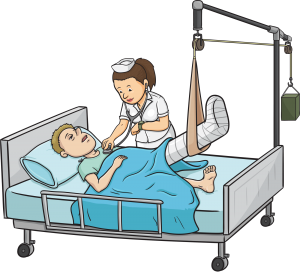
CMS has implemented a new quality measure for hospitals that expands the array of pressure injuries considered as adversely impacting quality care. The new measure, developed in a program to provide electronic clinical quality measures (eCQMs), widens the scope of pressure injury stages that directly infer quality deficit. The new measure however, bears no consideration for unavoidability of some pressure injuries even when recommended clinical practice guidelines for prevention have been followed.
According to CMS, the benefit of eCQMs is to assess the outcomes of treatment, reduce the burden of manual abstraction and reporting, and foster access to real-time data for quality improvement and clinical decision making. The ultimate goal is to improve patient quality of life and lower Medicare costs.
The new eCQM is entitled Hospital Harm – Pressure Injury, and is defined as follows:
“This measure assesses the proportion of inpatient encounters of patients 18 years of age or older at admission, who suffer the harm of developing a new stage 2, stage 3, stage 4 pressure injury, deep tissue pressure injury, or unstageable pressure injury. The measure defines a new pressure injury as not present on arrival to the hospital or not documented within the first 24 hours after hospital arrival. Only one harm (new qualifying pressure injury) is counted per encounter.”
This new eCQM was developed by the Center for Outcomes Research and Evaluation (CORE) which is part of the Yale Hew Haven Health system. CORE is considered a leading national outcomes research center designed to assess healthcare quality and evaluate clinical decision making and comparative effectiveness of specific healthcare interventions.
The rationale for this new measure is that pressure injuries are serious events and one of the most common patient harms that lead to local infection, osteomyelitis, anemia, and sepsis, and cause depression and discomfort. Previously, pressure injuries of stage 3 or 4 were considered Serious Reportable Events (SREs) by the National Quality Forum and CMS, with an established non-payment program for these entities. The new eCQM is important in that it significantly widens the scope of pressure injury stages that are subject to quality measurement, and therefore increases hospital exposure to adverse quality measures. Low quality measure scores have serious consequences that impact reimbursement, facility reputation, and risk-management.
In my opinion however, there are several considerations that render this new eCQM problematic. There is increasing acceptance in the wound care community that many wounds are unavoidable even when current clinical practice guidelines for pressure injury prevention are followed. There are several factors suspected as leading to skin failure that include hypotension, edema, severe malnutrition, multi-organ system organ failure, the dying process, and others.
The case is growing for recognition of skin failure as a real entity that would render unreasonable a quality deficit designation. The aging of the population along with the increased prevalence of multiple chronic illnesses in persons being kept alive by medical technology has caused an increase in unavoidable pressure injuries as well as non-healing wounds of all types. The care administered in keeping very sick people alive is sometimes accompanied by skin failure, or the unavoidable occurrence of pressure injuries and non-healing wounds. In such situations, under the CMS eCQM program, the hospital could receive a quality deficit for doing what is otherwise an excellent job of patient care. One remedy would be development of a modifier that takes into consideration implementation of prevention measures.
Unfortunately there is currently no accepted algorithm for determination of unavoidability, and no biomarker for skin failure. Therefore the determination of unavoidability is based upon bedside assessment and expert opinion, delineating physiological factors in conjunction with prevention interventions. This absence of a standardized algorithm for determination of unavoidability, and the lack of universally accepted criteria for skin failure, demonstrates the pressing need for research. Until these issues are clarified, hospitals and other locations in the healthcare continuum will bear the burden of adverse quality measurements for unavoidable consequences of rendering good medical care.
* * * * * * * * * * * * * *
References and Useful Links:
Click here for Information on Yale’s CORE Quality Measurement Program.
Click here for General information on the eCQM program.
Click here for more information on the Hospital Harm – Pressure Injury measure.
Pressure Injuries and the Human Warranty
Determining the Avoidability of Pressure Ulcers
